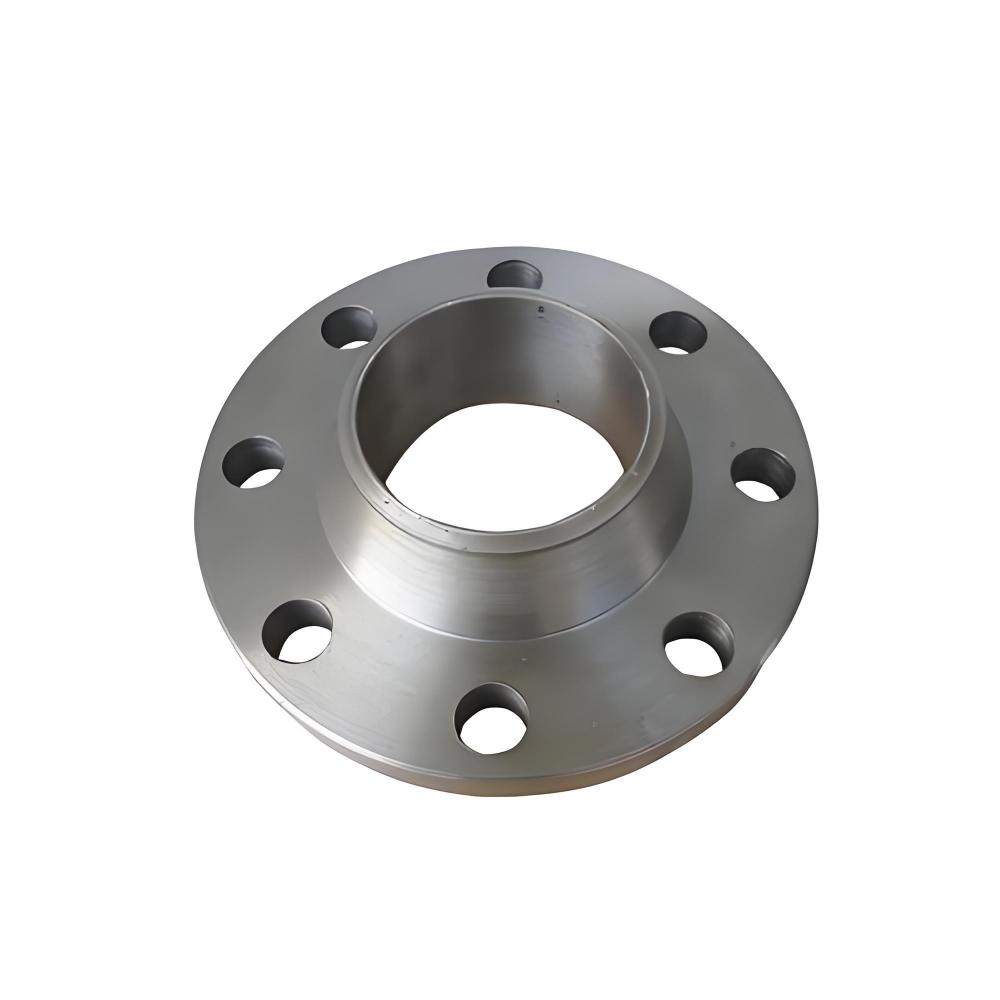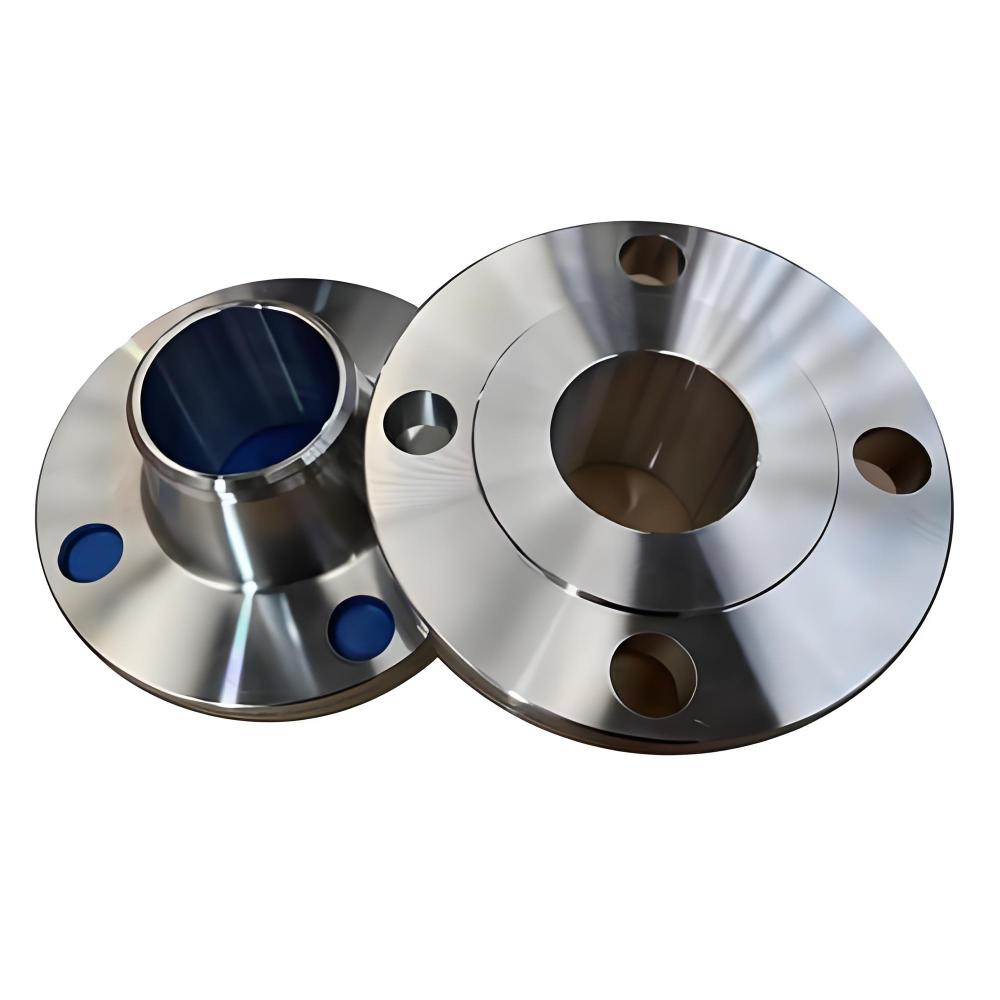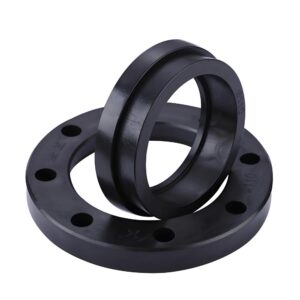What Is a Weld Neck Flange?
A weld neck flange, sometimes called a high-hub flange, is a specialized pipe fitting designed to be butt-welded to the end of a pipe. Its standout feature is the long, tapered neck that seamlessly connects the pipe to the flange’s flat, circular base. This design reduces stress at the joint, making it ideal for demanding applications. The flange is bolted to another flange or fitting, creating a robust, leak-resistant connection.

Why do industries love weld neck flanges? Their ability to handle extreme conditions—think high pressure, intense heat, or corrosive fluids—sets them apart. From oil and gas pipelines to chemical processing plants, these flanges ensure systems run smoothly without costly downtime. If you’re looking for a flange that combines strength and reliability, the weld neck design is hard to beat.
Standards and Specifications of Weld Neck Flanges
Weld neck flanges are built to strict standards to ensure they perform reliably in critical systems. These standards, set by organizations like ASME, ANSI, and API, cover everything from dimensions to pressure ratings.
Key Industry Standards
- ASME B16.5: Governs pipe flanges and fittings up to 24 inches, widely used in North America.
- ASME B16.47: Applies to larger flanges for high-pressure systems, common in oil and gas.
- API 605: Focuses on large-diameter flanges for petroleum and natural gas industries.
- DIN and EN Standards: Ensure compatibility for European and international projects.
Flange Specifications
Weld neck flanges come in various sizes, pressure classes (e.g., Class 150 to 2500), and materials to suit specific needs. The flange face can be raised, flat, or ring-type joint (RTJ), depending on the sealing requirements. These specs ensure the flange can handle the system’s pressure, temperature, and medium.
Processing Technology of Weld Neck Flanges
The processing technology behind weld neck flanges leverages advanced tools and expertise to ensure top-tier performance. Here’s a closer look at the innovative methods involved:
Advanced Forging Methods
Modern forging uses computer-controlled presses for precision shaping. Hot forging at temperatures above 1,000°C optimizes the metal’s grain structure. Closed-die forging minimizes waste, creating near-net-shape flanges that require less machining.
CNC Machining Precision
Computer Numerical Control (CNC) machines refine the flange’s dimensions. The tapered neck is machined to match the pipe’s outer diameter, ensuring a seamless weld. Bolt holes are drilled with pinpoint accuracy for perfect alignment.
Surface Treatments and Coatings
To boost durability, flanges undergo sandblasting or polishing to remove imperfections. In corrosive settings, coatings like zinc plating or epoxy protect against rust and chemical damage, extending service life.
Weld Preparation and Inspection
The neck’s bevel is machined to a precise angle (typically 37.5°) for optimal welding. Laser scanning verifies bevel geometry, and post-weld heat treatment may be applied to relieve stresses and enhance joint strength.
Automation for Consistency
Automated systems, like robotic drilling and testing equipment, ensure consistency and quality. These technologies streamline production while meeting strict standards for reliability and performance.
Applications of Weld Neck Flanges Across Industries
Weld neck flanges shine in industries where reliability is non-negotiable. Their robust design makes them a staple in high-stakes environments. Here are some key applications:
Oil and Gas Pipelines
In oil refineries and gas processing plants, weld neck flanges connect pipelines carrying crude oil, natural gas, or refined products. Their leak-proof design prevents hazardous spills, ensuring safety and efficiency.
Chemical Processing Plants
Handling corrosive or toxic fluids? Weld neck flanges, often made from corrosion-resistant materials like stainless steel or Hastelloy, keep chemical systems secure and operational.
Power Generation Facilities
Power plants rely on weld neck flanges for boilers, turbines, and cooling systems. Their ability to withstand high temperatures and thermal expansion makes them ideal for steam and hot water lines.
Water Treatment and Marine Systems
From desalination plants to shipbuilding, weld neck flanges connect pipes carrying water or other fluids under varying pressures, ensuring long-term reliability.
Advantages and Limitations of Weld Neck Flanges
Weld neck flanges offer unique benefits but come with some trade-offs. Understanding these can help you decide if they’re the right fit for your project.
Advantages
- Superior Strength: The welded neck distributes stress evenly, making these flanges perfect for high-pressure and high-temperature systems.
- Leak-Proof Performance: The butt-welded joint ensures a secure seal, critical for hazardous or volatile media.
- Long-Lasting Durability: Built from robust materials, weld neck flanges resist wear and tear in harsh environments.
- Versatile Options: Available in various sizes, materials, and pressure ratings to suit diverse applications.
Limitations
- Higher Cost: Weld neck flanges are pricier than slip-on or threaded flanges due to their complex design and manufacturing process.
- Installation Challenges: Butt-welding requires skilled labor and precise alignment, which can increase installation time and costs.
- Bulkier Design: The long neck adds weight and size, which may be an issue in compact systems.
Balancing these factors helps engineers choose the best flange for their specific needs.
How to Select the Appropriate Weld Neck Flange? Key Factors to Consider
Picking the right weld neck flange requires careful consideration of your piping system’s requirements. Here’s a practical guide to making the right choice:
Pipe Material and Specifications
Ensure the flange material is compatible with the pipe to avoid issues like corrosion. For instance, pair stainless steel pipes with stainless steel flanges for corrosive environments. Match the flange’s diameter and thickness to the pipe’s specs for a seamless fit.
Work Pressure and Temperature Levels
Check the flange’s pressure class (e.g., Class 300 or 600) to ensure it exceeds your system’s maximum operating pressure. Temperature is just as critical—high heat may require specialized alloys like Inconel to prevent deformation.
Type of Medium
The fluid or gas in your system matters. Corrosive media, like acids, demand corrosion-resistant materials. Flammable or explosive media require flanges that meet strict safety standards to prevent failures.
Cost and Maintenance Considerations
While weld neck flanges have a higher upfront cost, their durability can save on maintenance over time. Factor in installation costs and plan for regular inspections to catch issues like corrosion or weld imperfections early.
Why Precisonn Is Your Trusted Partner for Weld Neck Flanges
When it comes to weld neck flanges, Precisonn delivers unmatched quality and expertise. As a leader in the machining industry, Precisonn crafts precision-engineered flanges that meet rigorous international standards, ensuring reliability in even the toughest applications. Whether you’re in oil and gas, chemical processing, or power generation, their team is dedicated to providing tailored solutions that keep your systems running smoothly. Visit Precisonn’s website to explore their full range of piping solutions and see how their commitment to excellence can support your next project.




